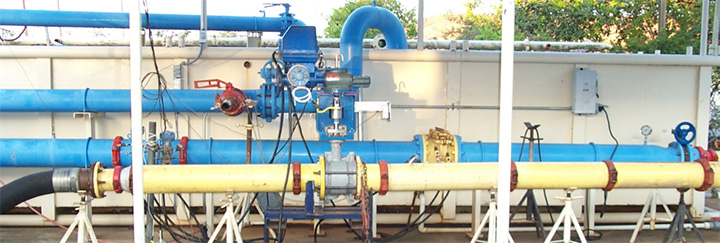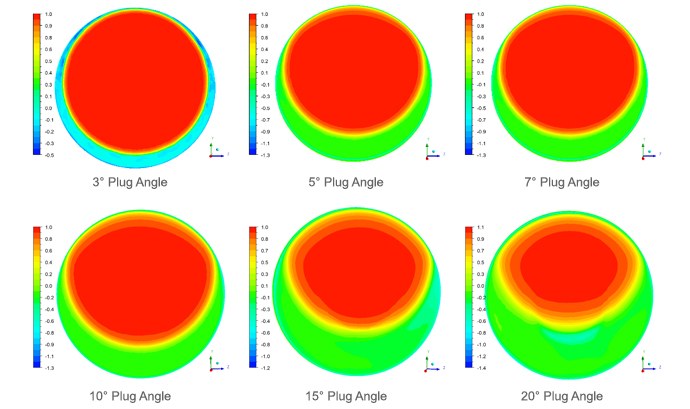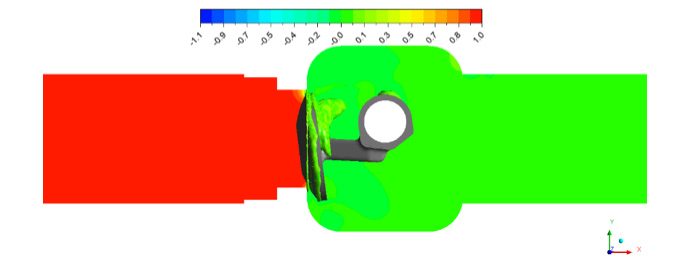Flow Loop Testing and CFD to Support Valve Model Development

Kalsi Engineering Inc. (KEI)™ developed analytical models to predict hydraulic torque and total torque requirements for various quarter-turn valves including eccentric plug valves. To support the analytical model development for eccentric plug valves, KEI performed flow loop testing on an 8-inch eccentric plug valve and performed Computational Fluid Dynamics (CFD) on a 3-inch valve.
The flow loop test data and CFD results were used to determine the following valve performance coefficients:
- Flow Resistance Coefficient
- Hydrodynamic/aerodynamic Torque Coefficient
- Bearing Force Coefficient
- Compressibility Factor
KEI used dimensions from an actual 3-inch valve to develop the 3D CFD model. CFD analyses were performed for single-phase incompressible and compressible flow conditions. The CFD analyses included piping configurations with and without an upstream disturbance. Pressure contours on the plug for key plug positions from the CFD results shown in Figure 1. Comparing pressure contours for the different applications and positions allowed KEI to determine which key characteristics of the valve body, plug, and seat have the most significant impact on the hydrodynamic torque predictions and valve requirements.
The performance coefficients obtained for this valve and the analytical model are currently incorporated in the Kalsi Valve and Actuator Program (KVAP). KVAP can be used to predict the valve required torque for various flow conditions and valve sizes.


